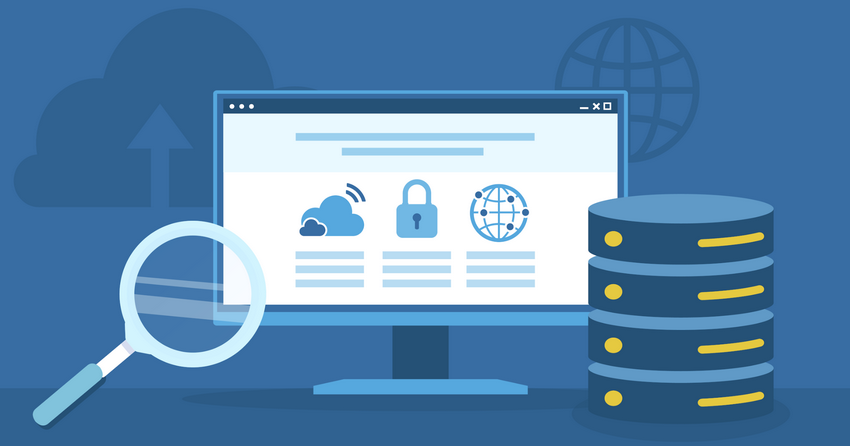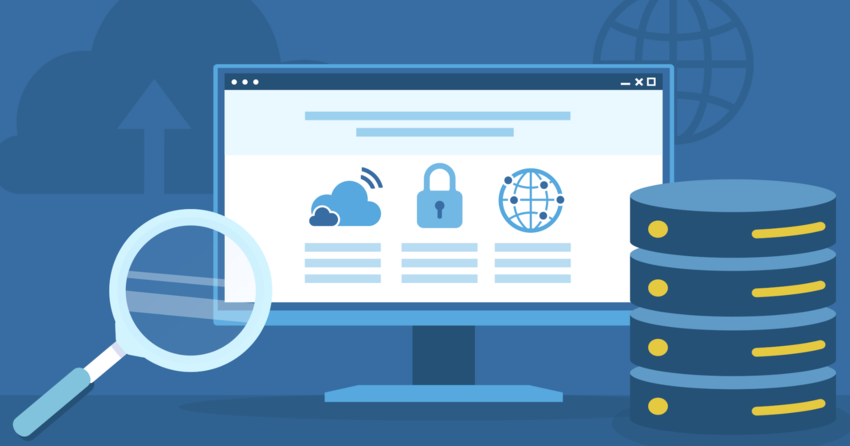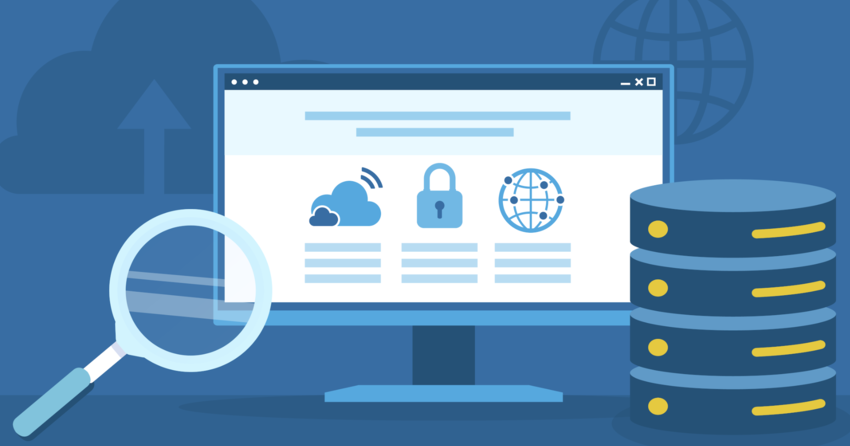A data center is a physical facility that organizations use to house their critical applications and data, acting as the central hub for managing and storing essential information. Within these facilities, you’ll find a network of computing and storage resources that enable the delivery of shared applications and data.
Securing these centers is crucial, so they often incorporate redundant or backup components for power supply, data communication connections, environmental controls, and security devices.
Definition of a Data Center
Data centers serve as specialized facilities designed to house and manage the IT infrastructure necessary for storing, processing, and disseminating data and applications. In essence, they are the backbone of modern business, enabling everything from email and file sharing to complex data analytics and cloud computing. The components within a data center—servers, storage systems, networking equipment, and more—work in concert to ensure continuous operation and accessibility.
Modern data centers also incorporate robust security measures, including physical access controls, surveillance systems, and advanced cybersecurity protocols, to safeguard sensitive data from unauthorized access or cyber threats. You can think of it as a digital fortress, fortifying your digital assets against potential risks.
How Does a Data Center Work?
Data centers operate as complex ecosystems, integrating various hardware and software components to deliver computing, storage, and networking services. To really understand their operation, let’s break down the key processes and infrastructure involved.
Computing resources, or servers, form the foundation of data center operations, providing the processing power necessary to run applications and execute tasks. You might find these servers in different forms, such as rack-mounted units or blade servers, each optimized for specific workloads.
Storage infrastructure is vital for storing data, with options like hard disk drives (HDDs), solid-state drives (SSDs), and network-attached storage (NAS) devices catering to different storage needs. You should know that storage systems are often configured in redundant arrays to ensure data durability and availability.
Networking, finally, is the backbone that connects all data center components, enabling communication between servers, storage devices, and external networks. This infrastructure includes switches, routers, and cabling, designed to facilitate high-speed data transfer and low latency. Data center networks often employ advanced technologies like software-defined networking (SDN) to optimize traffic flow and enhance network agility.
Data centers also incorporate various support systems to maintain optimal operating conditions. You have power infrastructure, with redundant power supplies, uninterruptible power supplies (UPS), and backup generators, ensuring continuous operation during power outages.
Cooling systems, like air conditioning units and liquid cooling solutions, regulate temperature and humidity to prevent equipment overheating and ensure reliable performance. Fire suppression systems use specialized agents to quickly extinguish fires without causing damage to sensitive electronic equipment.
Physical security measures, including access controls, surveillance cameras, and security personnel, protect the data center from unauthorized entry and physical threats.
The modern data center extends beyond on-premises infrastructure, incorporating cloud-based resources and services to enhance scalability and flexibility. By integrating public cloud platforms, you can offload certain workloads or leverage specialized services such as machine learning and data analytics. Hybrid cloud environments enable organizations to seamlessly blend on-premises and cloud resources, optimizing performance, cost, and security.
Types of Data Centers
Data centers come in various shapes and sizes, each designed to meet specific organizational needs and operational requirements. Let’s explore some of the most common types of data centers, highlighting their unique characteristics and use cases.
Enterprise data centers are built, owned, and operated by organizations for their internal use, typically housed within corporate campuses or dedicated facilities. Usually, enterprise data centers cater to the specific IT requirements of the organization, supporting business-critical applications and services. Due to the sensitive nature of the data they manage, they offer a high degree of control over infrastructure, security, and compliance.
Colocation data centers involve renting space and resources within a facility owned and operated by a third-party provider, offering organizations a cost-effective alternative to building and maintaining their own data centers. Because colocation facilities provide infrastructure like power, cooling, and networking, this arrangement allows you to focus on managing your servers, storage, and applications. Colocation data centers offer scalability, redundancy, and enhanced security measures.
Managed services data centers are facilities where a third-party provider manages an organization’s IT infrastructure, offering services like server administration, storage management, and network monitoring. With this approach, companies can offload IT management responsibilities and focus on core business activities. Since managed services data centers often provide round-the-clock support, they also ensure high availability and reliability.
Cloud data centers host IT infrastructure resources for shared use by multiple customers through an internet connection, providing on-demand access to computing, storage, and networking services. By leveraging cloud data centers, organizations can scale resources as needed, reduce capital expenditures, and improve agility. Keep in mind that cloud data centers come in various deployment models, including public, private, and hybrid clouds.
Edge data centers are smaller facilities located closer to end-users or data sources, distributing computing resources and minimizing latency for real-time applications. They are designed to support edge computing workloads, such as IoT devices, content delivery networks, and mobile applications. Their location closer to the edge of the network enables faster data processing, reduced bandwidth costs, and improved user experience.
Key Components of a Data Center
Data centers consist of a wide array of components that work together to provide a reliable and secure environment for storing, processing, and delivering data and applications. For you to fully understand what constitutes a data center, let’s examine the key elements and their respective roles.
Servers are the workhorses of a data center, providing the processing power necessary to run applications, host websites, and manage data. From rack-mounted servers to blade servers to mainframes, you can select different form factors and configurations depending on workload requirements. Inside data centers, high-performance servers often utilize multi-core processors, ample memory, and fast storage interfaces to deliver optimal performance.
The storage systems are essential for storing data, with various technologies available to meet different storage needs. You have hard disk drives (HDDs), solid-state drives (SSDs), network-attached storage (NAS), and storage area networks (SANs), each offering unique characteristics regarding speed, capacity, and cost. Within data centers, you could find storage systems designed for redundancy, scalability, and data protection, ensuring high availability and minimizing the risk of data loss.
Next, network infrastructure components include switches, routers, firewalls, and cabling, which enable communication between servers, storage devices, and external networks. For data centers, networking equipment provides high-speed connectivity, low latency, and robust security features to support data-intensive applications and services. Due to its importance, modern data centers utilize software-defined networking (SDN) technologies to optimize network performance and simplify network management.
After that, power infrastructure ensures a reliable power supply to all data center components, preventing downtime and data loss. You can expect redundant power sources, uninterruptible power supplies (UPS), and backup generators, safeguarding against power outages and voltage fluctuations. Efficient power distribution systems and energy management solutions help minimize energy consumption and reduce operating costs.
Finally, cooling systems regulate temperature and humidity within the data center to prevent equipment overheating and ensure reliable performance. As a result, you’ll see air conditioning units, chillers, and liquid cooling systems, maintaining optimal environmental conditions for IT equipment. Using innovative cooling technologies such as free cooling and containment strategies, modern data centers can minimize energy consumption and improve overall efficiency.
Standards for Data Center Infrastructure
Adhering to industry standards is essential for designing, constructing, and maintaining data center infrastructure, ensuring reliability, security, and efficiency. Let’s explore some of the most widely adopted standards and certifications for data center infrastructure.
Firstly, the ANSI/TIA-942 standard specifies the minimum requirements for telecommunications infrastructure within data centers, covering aspects like cabling, connectivity, and network design. Usually, the standard defines four tiers of data center infrastructure based on redundancy, availability, and fault tolerance. By adhering to ANSI/TIA-942, organizations can ensure that their data centers meet industry best practices for performance, scalability, and resilience.
The Uptime Institute’s Tier Standard is a widely recognized framework for evaluating data center infrastructure based on availability and redundancy. In particular, the Tier Standard defines four levels of data center tiers, ranging from Tier I (basic capacity) to Tier IV (fault-tolerant), each with specific requirements for power, cooling, and infrastructure redundancy. Gaining a Tier certification demonstrates an organization’s commitment to providing highly reliable and available data center services.
In addition, the ISO 27001 standard specifies requirements for establishing, implementing, maintaining, and continually improving an information security management system (ISMS). Essentially, ISO 27001 certification demonstrates an organization’s ability to protect sensitive data, manage security risks, and comply with regulatory requirements. Because data centers handle vast amounts of sensitive data, achieving ISO 27001 certification enhances credibility and trust among customers and stakeholders.
The Payment Card Industry Data Security Standard (PCI DSS) is a set of security requirements for organizations that handle credit card information, ensuring that cardholder data is protected from theft and fraud. For that matter, data centers that store, process, or transmit credit card data must comply with PCI DSS requirements, implementing measures like encryption, access controls, and regular security assessments. Showing compliance with PCI DSS demonstrates an organization’s commitment to safeguarding payment card data and maintaining a secure environment for financial transactions.
Ultimately, the Leadership in Energy and Environmental Design (LEED) is a green building certification program that recognizes environmentally sustainable design, construction, and operation practices. So it’s no surprise that data centers can achieve LEED certification by implementing energy-efficient technologies, reducing water consumption, and promoting sustainable materials and practices. By pursuing LEED certification, organizations can reduce their environmental footprint, lower operating costs, and enhance their reputation as environmentally responsible corporate citizens.
Data Center Transformation Strategies
In light of evolving business requirements, organizations must embrace data center transformation strategies to modernize their IT infrastructure, enhance agility, and drive innovation. You will need to align your technology investments with business objectives, improve operational efficiency, and prepare for future growth by employing these strategies.
To start, virtualization and cloud adoption enable organizations to consolidate physical servers, optimize resource utilization, and reduce infrastructure costs. In this case, migrating workloads to public, private, or hybrid cloud environments provides scalability, flexibility, and on-demand access to computing resources. By embracing virtualization and cloud adoption, you can improve agility, reduce capital expenditures, and accelerate application deployment.
Next, software-defined infrastructure (SDI) involves virtualizing and automating various infrastructure components such as computing, storage, and networking, enabling organizations to provision resources dynamically and respond quickly to changing business needs. Through SDI, you can automate routine tasks, streamline operations, and improve overall efficiency. In order to unlock agility and flexibility, SDI empowers organizations to align IT resources with business priorities and accelerate innovation.
Data center automation and orchestration tools streamline IT operations, automate routine tasks, and improve resource utilization. By implementing automated workflows, you can reduce manual intervention, minimize errors, and accelerate application deployment. Through automated provisioning, configuration management, and monitoring, you can reduce operational overhead and improve overall efficiency.
Data analytics and insights enable organizations to collect, analyze, and visualize data from various sources, providing valuable insights into data center performance, resource utilization, and energy consumption. By leveraging data analytics tools, you can identify bottlenecks, optimize resource allocation, and improve overall efficiency. These data-driven insights help you make informed decisions and continuously improve data center operations.
Security and compliance are paramount concerns for modern data centers, requiring organizations to implement robust security measures and adhere to regulatory requirements. By adopting a defense-in-depth approach, you can protect sensitive data, prevent unauthorized access, and mitigate security risks. In order to show compliance with industry standards like ISO 27001 and PCI DSS, data centers should implement stringent security policies and procedures.
Lastly, sustainability initiatives focus on reducing energy consumption, minimizing environmental impact, and promoting responsible resource management. With this in mind, data centers can implement energy-efficient technologies, utilize renewable energy sources, and optimize cooling systems to reduce their carbon footprint and lower operating costs. Committing to sustainability helps organizations meet corporate social responsibility (CSR) goals, improve brand reputation, and attract environmentally conscious customers.
The Future of Data Centers
As technology continues to evolve at an unprecedented pace, the future of data centers is poised for dramatic transformation. Let’s explore some of the key trends and innovations that will shape the data center landscape in the years to come.
Artificial intelligence (AI) and machine learning (ML) technologies will play an increasingly important role in optimizing data center operations, enhancing security, and improving resource utilization. In particular, AI-powered analytics can monitor data center performance, predict potential issues, and automate routine tasks, reducing operational overhead and improving overall efficiency. ML algorithms can optimize energy consumption, improve cooling efficiency, and enhance security by detecting anomalous behavior and preventing cyber threats.
Then, edge computing, which involves processing data closer to the source, will drive the deployment of smaller, distributed data centers at the edge of the network. The goal of these edge data centers will be to support low-latency applications such as IoT devices, autonomous vehicles, and augmented reality (AR) experiences. With this in mind, edge computing will help to minimize bandwidth costs, improve responsiveness, and enable new types of applications and services.
Quantum computing, a new paradigm that utilizes the principles of quantum mechanics, promises to revolutionize data processing and computation. For data centers, quantum computing has the potential to solve complex problems that are beyond the reach of classical computers. If you consider applications such as drug discovery, materials science, and financial modeling, quantum computing could unlock new opportunities for innovation and discovery.
Additionally, sustainability will become an increasingly important consideration for data centers, driven by growing environmental concerns and regulatory pressures. Data centers will adopt more energy-efficient technologies, utilize renewable energy sources, and implement innovative cooling solutions to reduce their carbon footprint and minimize environmental impact. In response to customer demand for sustainable services, organizations will seek certifications like LEED and Energy Star to demonstrate their commitment to environmental stewardship.
Finally, security will remain a top priority for data centers as cyber threats become more sophisticated and pervasive. To address evolving security challenges, you can employ advanced security technologies such as AI-powered threat detection, behavioral analytics, and blockchain-based security solutions. Data centers will adopt zero-trust security models, which assume that no user or device is inherently trustworthy, requiring continuous authentication and authorization.
Summary
Data centers are physical facilities that house the critical IT infrastructure essential for modern business operations, serving as the central hub for storing, processing, and delivering data and applications. Within these centers, you can find a wide array of components, including servers, storage systems, networking equipment, and support infrastructure, all working together to ensure continuous operation and accessibility. Due to the need for increased flexibility and scalability, data centers continue to evolve to meet the ever-changing demands of the digital age.
By understanding what data centers are and how they work, you can make informed decisions about your IT strategy, ensuring that your organization is well-equipped to thrive in the digital economy.









